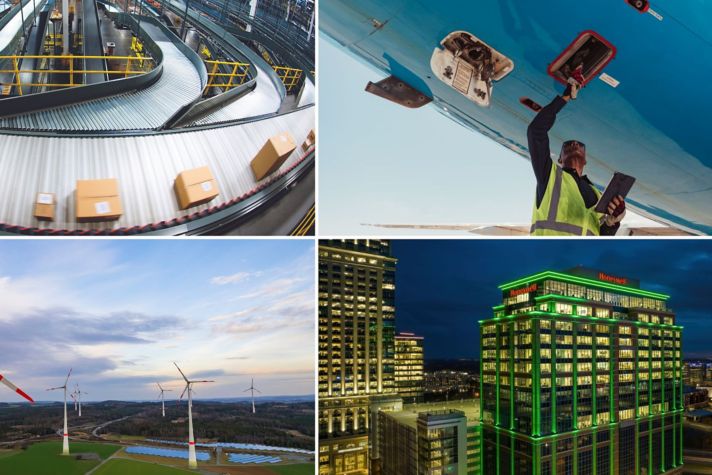-
 Global
Global-
Africa
-
Asia Pacific
-
Europe
-
Latin America
-
Middle East
-
North America
- |
- BUSINESSES
- |
- Contact
- |
-
 Global
Global-
Africa
-
Asia Pacific
-
Europe
-
Latin America
-
Middle East
-
North America
- |
- BUSINESSES
- |
- Contact
- |
You are browsing the product catalog for
- News
- How Trash and Food Waste Could Help Power Planes
How Trash and Food Waste Could Help Power Planes
Learn about a pathway to sustainable aviation fuel (SAF) that uses everyday trash and leftovers from crops, wood pieces and food waste as feedstock
The next time you take out the trash, know that those leftover food scraps could help contribute to future sustainable aviation fuel (SAF) production.
Honeywell’s technology uses solid waste, which you probably know as garbage or trash; and biomass, or waste from forest and agricultural sites, to develop SAF that is 90% less carbon intensive than traditional jet fuels.1
How it works: The technology uses trash and waste biomass – which includes leftovers from crops, wood pieces or food scraps – as feedstock to create SAF. The technology produces 3-5% more SAF compared to other commonly used technologies.2
SAF can be made from a variety of sources, or feedstocks, such as used fats, oils and greases, waste biomass, and other waste materials. The result is a lower-carbon alternative to conventional jet fuel that, today, can be mixed with up to 50% of traditional jet fuel to power an aircraft and is compatible with current airport and fueling infrastructure, making it a drop-in solution.
Why it’s impactful: Globally, the aviation industry commits to reaching net-zero carbon emissions by 2050. The International Air Transport Association estimates that SAF could contribute around 65% of the emissions reduction needed for the aviation sector to reach its net-zero goal. Due to constraints of fats, oils and greases available globally to be used as feedstocks, multiple technology pathways will be needed to meet the expected demand for SAF.
Using biomass and municipal solid waste (in other words, trash) as feedstock is an especially viable route for SAF production because it uses widely abundant materials.
What else to know about renewable fuels: Honeywell has also developed technologies that can help convert ethanol (from corn, sugarcane or other crops) into SAF; as well as Honeywell UOP EcofiningTM, a process that uses waste fats, oils and greases to develop SAF. Additionally, the Honeywell UOP eFiningTM process converts green hydrogen and carbon dioxide into electrofuels (eFuels for short), which are a class of renewable fuels that can replace conventional jet fuel.
Learn more in this podcast episode about pathways to SAF production.
1Carbon intensity is based on ICAO CORSIA default lifecycle emissions values for CORSIA-eligible fuels, Table 1 - agricultural residues and forestry residues. Corsia Eligible Fuels - Life Cycle Assessment Methodology - Version 5 June 2022.
2 By utilizing proprietary SAF selective Honeywell UOP hydrocracking and hydro-isomerization catalysts.
Copyright © 2024 Honeywell International Inc.




